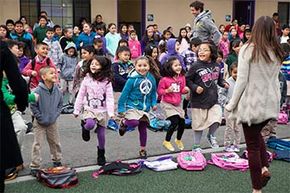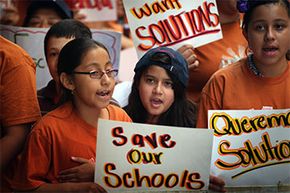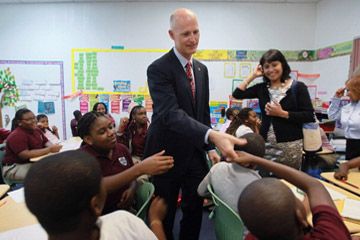The U.S. spends a lot on public education, but how much is "a lot"? How much of the federal and state budgets go to education? And with the fairly dismal reading and math scores and graduation rates, do Americans get their money's worth?
The problem with education, like pretty much everything else in life, is that schools don't just run themselves. They require administrators, teachers, students, equipment and facilities, all of which cost money – and lots of it. Taxpayer dollars are a major source of school funding, but few know exactly where and how Americans' hard-earned cash is shelled out, and it can be difficult to decipher the system unless you know where to look. Without the tools, staff and facilities necessary to achieve academic progress, children are far less likely to thrive on a long-term basis, with 31 percent of high-school dropouts likely to wind up living in poverty [source: Do Something].
Advertisement
Public education in the U.S. was long ago laid out by the government as largely the responsibility of individual states. As such, there's a pretty big disconnect between how each entity operates and funds systems and individual schools. Each state has their own specific "formula" to follow, but they all allow for the same expenses, including [source: Ohio Department of Education]:
- instructional costs (salaries for teachers, aides, as well as materials and technology used within the classroom)
- administration salaries (principals, vice principals, boards of education)
- staff support (training and continued education)
- student support outside the educational environment (guidance counseling, field trips, and psychological testing)
- building support (maintenance, lawn care and utility bills)
It's hard, if not nearly impossible to pigeonhole averages on where and how these dollars are allocated, since each state handles education with significant difference. However, salary costs do tend to take up the lion's share of the pot, with 84 percent going to personnel salaries (for teachers and administrators) [source: Huffington Post].
Check out this basic overview to learn more about about school funding sources and how they impact the system, and children in the U.S.
Advertisement





